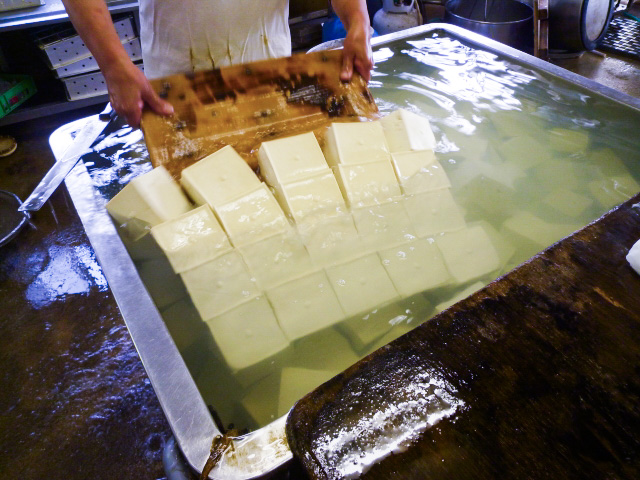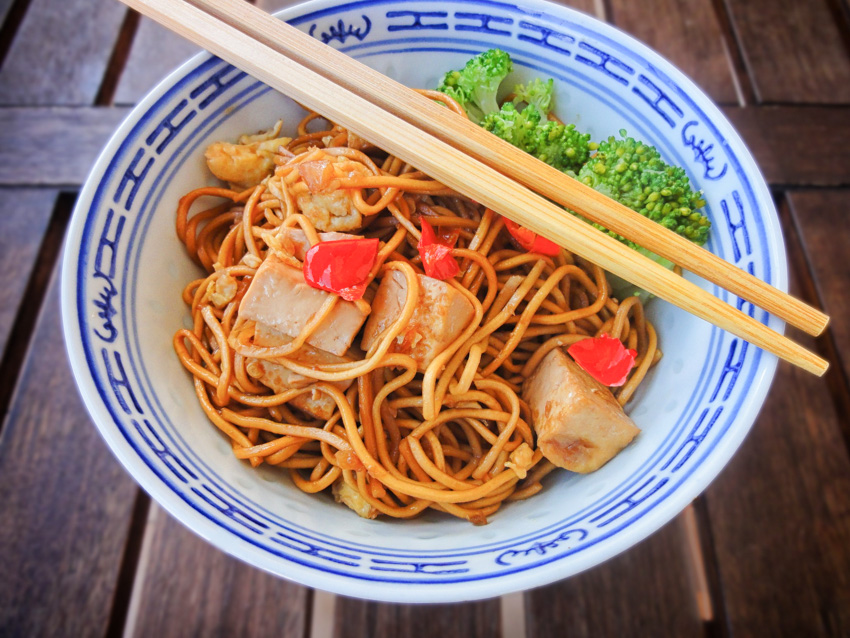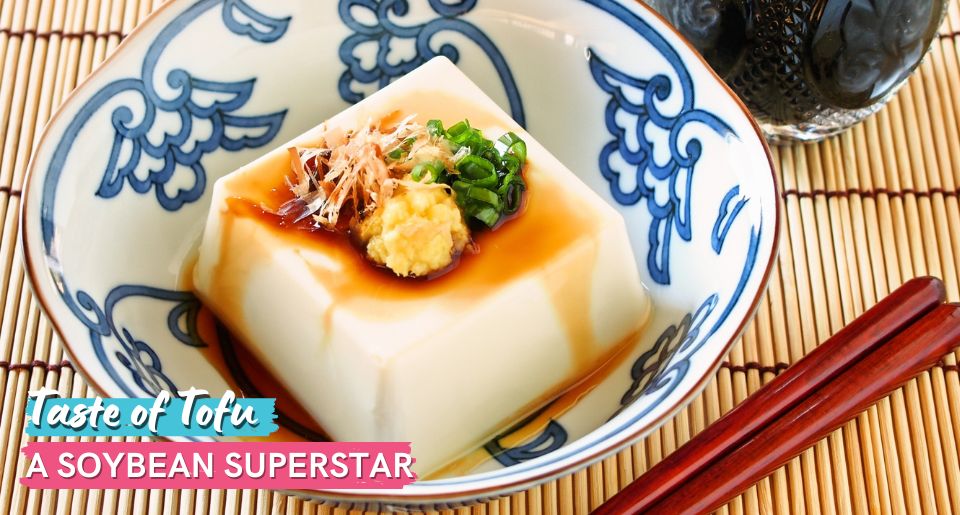Contents
- Introduction
- Tofu Types: A Dive into the Rich Tofu Culture of Japan
Momen-dōfu (Firm Tofu)
Kinugoshi-dōfu (Silken Tofu)
Oboro-dōfu/Yose-dōfu (Extra-soft Tofu)
Yaki-dōfu (Grilled Tofu)
Goma-dōfu
Shima-dōfu
Yuba (Tofu skin)
Okara (Soy Pulp)
Abura-age (Thin Fried Tofu)
Atsuage (Deep Fried Tofu Block)
Ganmodoki (Fried Tofu Patties) - Satisfy Your Cravings and Order Rare Japanese Tofu Now!
- About the Writer
Introduction
Tofu (豆腐, とうふ), often being accused of having a bland and boring taste, actually shines brilliantly as a superstar ingredient in the Japanese cuisine. Its true magic lies in its ability to soak up flavors like a sponge, much like a canvas that captures the very essence of its surroundings. And the resulting dish is nothing short of mouthwatering—what could top a protein-packed delight overflowing with the tantalizing, authentic essence of Japanese flavors?
People in Japan absolutely adore tofu, and their passion is evident in the diverse range they've developed to savor soybean goodness to the max. So, keep reading to delve into the world of Japanese tofu, from its various unique types to its creation process and the traditional ways of enjoying it. As a bonus, we'll also direct you to where you can grab Japan's own tofu gems so you can immerse yourself in the Japanese tofu culture!
Tofu Types: A Dive into the Rich Tofu Culture of Japan

The Japanese market is brimming with a variety of lip-smacking tofu options that are categorized by their creation methods, unique textures and firmness, and cooking and serving methods. Here's an overview of the most popular kinds of this soy milk superfood:
Momen-dōfu (Firm Tofu)
Momen dōfu is a firm, voluminous, and rich type of tofu commonly added to stews and nabe (hot pot). Its firmness allows it to maintain its shape even when simmered on high heat, while also soaking up all the flavors from the cooking liquid. Its solid texture also makes it an excellent choice for stir-frying with your favorite vegetables and meat. And if you're in the mood for a pure crispy tofu experience, pan-frying is the way to go!
Kinugoshi-dōfu (Silken Tofu)
The meaning of Kinugoshi dōfu lies in its Japanese name, which translates to "silk-filtered tofu." The name comes from the traditional technique of shaping the tofu by wrapping it in silk cloth, resulting in blocks that have a delicate and soft texture. This type of tofu is typically enjoyed on its own or as an ingredient in flavorful miso soups.
Oboro-dōfu/Yose-dōfu (Extra-soft Tofu)
The unmatched softness of Oboro-dōfu/Yose-dōfu sets them apart from other tofu varieties. Their true charm lies in the sheer simplicity of savoring them in their natural, unaltered state (whether you prefer them warm or refreshingly cold!), allowing you to completely immerse yourself in the genuine essence of tofu's flavor.
Yaki-dōfu (Grilled Tofu)
Yaki dōfu is a grilled firm tofu that boasts tantalizingly subtle smokiness and enticing grill marks adorning its surface. With a firmer and denser texture compared to regular tofu, Yaki-dōfu is like a culinary gem that works perfectly for longer cooking times in delicious traditional dishes like Sukiyaki and other carefully simmered delicacies.
Goma-dōfu
Goma-dōfu is not your average tofu – it takes a unique approach by ditching soybeans and opting for dashi, sesame seeds, and kudzu starch. As a result, Goma-dōfu boasts a texture unlike that of regular tofu, resembling a delightful fusion of pudding and custard – a sensation that will undoubtedly catch you pleasantly off guard!
Shima-dōfu
In the southernmost tropical island of Japan, Okinawa, you'll find a special tofu called Shima-dōfu or island tofu. This tofu variety boasts a firmer texture and higher protein content than regular tofu, making it an indispensable ingredient for preparing goya champuru, a regional Okinawan dish featuring stir-fried bitter melon, bacon or pork, eggs, and Shimafodu.
Yuba (Tofu skin)
Yuba, also known as tofu skin, is a unique and enjoyable type of tofu that forms as a thin layer when soy milk is simmered. When fresh, yuba has a delicate flavor and a texture reminiscent of mozzarella cheese, making it perfect to savor with a touch of ponzu dressing or paired with wasabi and soy sauce. On the other hand, dried yuba is often boiled, fried, or added to soups.
Okara (Soy Pulp)
Okara is a tofu byproduct made from what's left after extracting soy milk from soybeans, and it's renowned for its high protein and nutrient content. The Japanese often sauté okara with vegetables, to create a tasty salad called unohana. Okara is also gaining fame in the world of baked goods, with okara donuts and okara cookies being the latest favorites!
Abura-age (Thin Fried Tofu)
Let's be honest, tofu can come across as rather plain and uninspiring to some people as it doesn't naturally burst with flavors. But once it takes a dip in hot oil, this seemingly unexciting food transforms into an irresistible treat! Abura-age is a popular deep-fried tofu in Japan that never fails to satisfy the craving for crunch. You can either open it carefully like a pouch or cut it into strips, and then fry it until it turns perfect golden brown. Once it's fried up, you can use it as a topping for Kitsune Udon or add it to delicious miso soups like Kenchinjiru or Tonjiru.
Atsuage (Deep Fried Tofu Block)
Another mouthwatering and addictive type of Japanese deep-fried tofu is Atsuage. It's so delicious that it takes center stage as a main ingredient in the traditional dish Agedashi-dōfu (揚げ出し豆腐), and various other Japanese recipes. The making of this tofu involves deep frying a thick block until it forms a deliciously golden brown crust on the outside while maintaining its creamy and tender inside. It can be enjoyed solo, seasoned with a sauce, or incorporated into soups and stews.
Ganmodoki (Fried Tofu Patties)
Ganmodoki is a mouthwatering fried tofu treat from Japan packed with bits of veggies like carrots, lotus roots, and burdock. This deep-fried tofu often finds its way into Oden and Nimono dishes, simmering harmoniously with additional veggies. A fun detail to note is that Ganmodoki translates to "mock goose" in Japanese, referring to the early version of this tofu that was made with konnyaku and resembled and tasted like goose meat. However, the present-day Ganmodoki, the present-day Ganmodoki is made with tofu and hence does not carry any meaty essence.
Satisfy Your Cravings and Order Rare Japanese Tofu Now!

Now that you've explored the realm of tofu varieties and the classic ways they're savored, your taste buds are probably begging for a bite. But don't worry – the wait for authentic Japanese tofu is nearly over. Thanks to the e-commerce platform ZenPlus, you can now have that 100% genuine Japanese tofu sent straight to your doorstep with just a few clicks. Don't keep your cravings waiting any longer – order your tofu now and indulge in all the rare Japanese goodies you've been daydreaming about!

